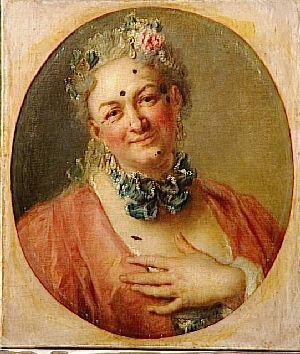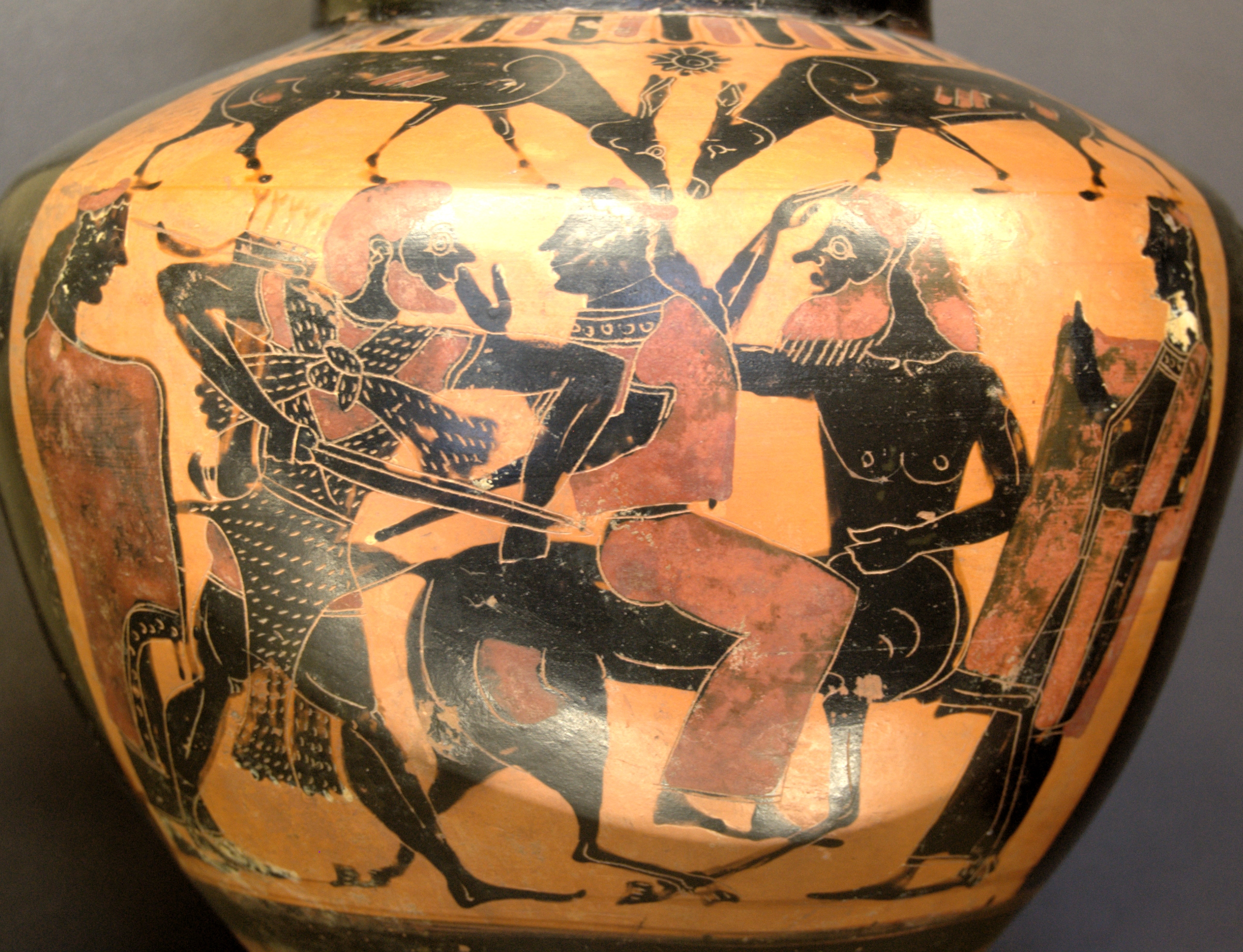|
Astarté (opera)
''Astarté'' is an opera in four acts and five scenes by Xavier Leroux to a libretto by Louis de Gramont. It was premiered at the Opéra de Paris on 15 February 1901, directed by Pedro Gailhard. The protagonist is the hero Heracles, who falls under the control of the Lydian queen Omphale. Omphale is depicted as a cultist of Astarte. Roles Synopsis Act 1 Heracles, Duke of Argos, plans to undertake a new campaign to destroy the infamous cult of the goddess Astarte. He will go to Lydia, in order to exterminate the queen Omphale, a cruel and indecent sectarian of this goddess. Nothing can hold him back, not even the love of his wife Deianira. She wants to use a talisman to warn him against Omphale's seductions, which she fears. This talisman is the famous tunic of the centaur Nessos that the latter gave her, telling her that when Hercules put it on, he would never look at another woman again. She therefore instructs Iole, her ward, to follow in her husband's footsteps and ... [...More Info...] [...Related Items...] OR: [Wikipedia] [Google] [Baidu] |
Haute-contre
The haute-contre (plural hautes-contre) was the primary French operatic tenor voice, predominant in French Baroque and Classical opera, from the middle of the seventeenth century until the latter part of the eighteenth century. History This voice was predominantly used in male solo roles, typically heroic and amatory ones, but also in comic parts, even ''en travesti'' (see apropos the portrait reproduced below and representing Pierre Jélyotte made up for the female title role of Rameau's ''Platée''). Lully wrote 8 out of 14 leading male roles for the voice; Charpentier, who was an haute-contre himself, composed extensively for the voice-part, as did Rameau and, later, Gluck. The leading ''hautes-contre'' of the ''Académie Royale de Musique'' that created the main roles of Lully's operas, at the end of the seventeenth century, were Bernard Clédière (who started off as a ''taille'', a lower Tenor voice type) and Louis Gaulard Dumesny. Notable ''hautes-contre'' of the eighteent ... [...More Info...] [...Related Items...] OR: [Wikipedia] [Google] [Baidu] |
Centaur
A centaur ( ; grc, κένταυρος, kéntauros; ), or occasionally hippocentaur, is a creature from Greek mythology with the upper body of a human and the lower body and legs of a horse. Centaurs are thought of in many Greek myths as being as wild as untamed horses, and were said to have inhabited the region of Magnesia and Mount Pelion in Thessaly, the Foloi oak forest in Elis, and the Malean peninsula in southern Laconia. Centaurs are subsequently featured in Roman mythology, and were familiar figures in the medieval bestiary. They remain a staple of modern fantastic literature. Etymology The Greek word ''kentauros'' is generally regarded as being of obscure origin. The etymology from ''ken'' + ''tauros'', 'piercing bull', was a euhemerist suggestion in Palaephatus' rationalizing text on Greek mythology, ''On Incredible Tales'' (Περὶ ἀπίστων), which included mounted archers from a village called ''Nephele'' eliminating a herd of bulls that were the scourge ... [...More Info...] [...Related Items...] OR: [Wikipedia] [Google] [Baidu] |
Talisman
A talisman is any object ascribed with religious or magical powers intended to protect, heal, or harm individuals for whom they are made. Talismans are often portable objects carried on someone in a variety of ways, but can also be installed permanently in architecture. Talismans are closely linked with amulets, fulfilling many of the same roles, but a key difference is in their form and materiality, with talismans often taking the form of objects (eg., clothing, weaponry, or parchment) which are inscribed with magic texts. Talismans have been used in many civilizations throughout history, with connections to astrological, scientific, and religious practices; but the theory around preparation and use has changed in some cultures with more recent, new age, talismanic theory. Talismans are used for a wide array of functions, such as: the personal protection of the wearer, loved ones or belongings, aiding in fertility, and helping crop production. Etymology The word ''talisman'' c ... [...More Info...] [...Related Items...] OR: [Wikipedia] [Google] [Baidu] |
Deianira
Deianira, Deïanira, or Deianeira (; Ancient Greek: Δηϊάνειρα, ''Dēiáneira'', or , ''Dēáneira'', ), also known as Dejanira, is a Calydonian princess in Greek mythology whose name translates as "man-destroyer" or "destroyer of her husband". She was the wife of Heracles and, in late Classical accounts, his unwitting murderer, killing him with the poisoned Shirt of Nessus. She is the main character in Sophocles' play ''Women of Trachis''. Family Deianira was the daughter of Althaea and her husband Oeneus (whose name means "wine-man"), the king of Calydon (after the wine-god gave the king the vine to cultivate), and the half-sister of Meleager. Her other siblings were Toxeus, Clymenus, Periphas, Agelaus (or Ageleus), Thyreus (or Phereus or Pheres), Gorge, Eurymede and Melanippe. In some accounts, Deianira was the daughter of King Dexamenus of Olenus and thus, sister to Eurypylus, Theronice and Theraephone. Others called this daughter of Dexamenus as Mnesimach ... [...More Info...] [...Related Items...] OR: [Wikipedia] [Google] [Baidu] |
Argos, Peloponnese
Argos (; el, Άργος ; grc, label=Ancient Greek, Ancient and Katharevousa, Ἄργος ) is a city in Argolis, Peloponnese (region), Peloponnese, Greece and is one of the List of oldest continuously inhabited cities, oldest continuously inhabited cities in the world, and the oldest in Europe. It is the largest city in Argolis and a major center for the area. Since the 2011 local government reform it has been part of the municipality of Argos-Mykines, of which it is a municipal unit. The municipal unit has an area of 138.138 km2. It is from Nafplion, which was its historic harbour. A settlement of great antiquity, Argos has been continuously inhabited as at least a substantial village for the past 7,000 years. A resident of the city of Argos is known as an Argive ( , ; grc-gre, Ἀργεῖος). However, this term is also used to refer to those ancient Greeks generally who assaulted the city of Troy during the Trojan War; the term is more widely applied by the Home ... [...More Info...] [...Related Items...] OR: [Wikipedia] [Google] [Baidu] |
Vera Nimidoff
Vera Nimidoff (1879–1963) was a singer, born in Odessa (then in the Russian Empire), who performed at the Paris Opera in 1900–1903 and then held a Salon (gathering), literary salon with her husband Louis Bour. Life Nimidoff studied at the Milan Conservatory. She came to Paris to finish her musical studies at the singing school of Eugénie Vergin-Édouard Colonne, Colonne in 1899 then with Désirée Artôt. She made her debut at the Paris Opera on March 10, 1900, as Stéfano in Gounod's ''Roméo et Juliette'' then Siebel in Gounod's ''Faust (Gounod), Faust'' in October 1900. She sang the role of Cleanthis in the première of Xavier Leroux's ''Astarté (opera), Astarté'' in 1901 and Waltraute in Wagner's ''Die Walküre'' in April 1903. After leaving the Paris Opera, she sang in the evening concerts at Ostend in 1903. She appeared in Henri Rabaud's ''The Girl of Roland'' at the in July 1904. She also sang at the in 1904, at the Opéra de Nice in 1905. She was hired as a me ... [...More Info...] [...Related Items...] OR: [Wikipedia] [Google] [Baidu] |




